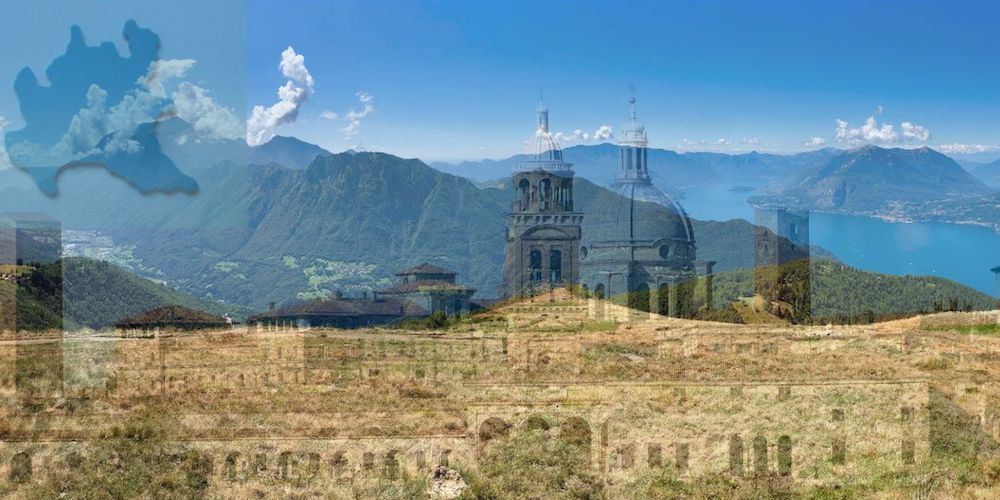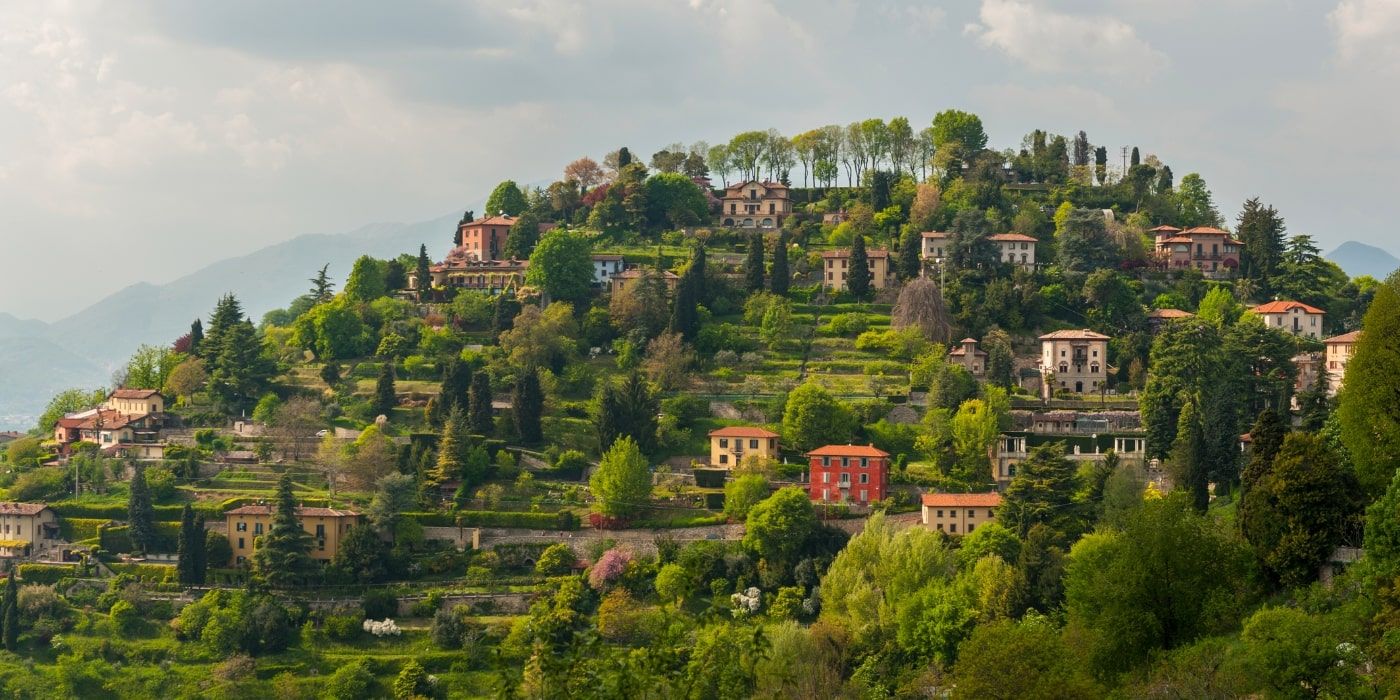Museums, cities, lakes, mountains, history and folklore. Lombardy offers this and much more, in a wide and varied territory that offers unique emotions in different settings: from the warmth of the clubs in Milan to the solitude of the Alpine paths, from the placid flow of a river along the Po valley to the elegant architecture of Lake Como.
7 stops for a 7 days itinerary will allow us to discover some of the most beautiful and symbolic places in Northern Italy. We’ll find out breathtaking landscapes and try typical products, and traveling on-the-road we’ll get in touch with the true soul of this extraordinary region.

7 days in Lombardy: the itinerary

The starting and finishing point for our 7 days itinerary in Lombardy is obviously Milan, the capital and most important city of the region, which will also be the first stop on our journey.
Then we will move north to admire the beautiful scenery of Lake Como: we’ll coast the lake up to Bellagio and then we’ll reach the city of Lecco. The third stage will lead us through the mountains of Valtellina, before returning south to explore the beautiful city of Bergamo.
From here, driving west, we will arrive in Franciacorta, between Brescia and Lake Iseo, where we’ll discover one of the typical wineries of this amazing hilly territory.
The sixth stage will see us in the wonderful city of Mantua, pearl of the Italian Renaissance. Finally we’ll conclude our journey in Cremona, the "city of violins", from where passing by the river Po and crossing the Po Valley we will come back to Milan.
1. Milan, starting point for the 7 days itinerary in Lombardy

Thanks to the presence of three airports and its role as a crucial transport hub in Northern Italy, Milan is the perfect starting point for our 7 days itinerary in Lombardy.
The city, however, is not just a simple crossing point, but a vibrant metropolis full of cultural attractions. One day allows only to scratch the surface of its beauties, and in fact it’s quite difficult to pick just a unique itinerary.
For example, we can start the day with a tour of the Castello Sforzesco, a splendid structure of the 15th century, and then continue walking in the adjacent Parco Sempione. After a lunch in one of the traditional Milanese trattorias of the lively Brera district, let’s head to the heart of the historic center to admire the majestic Piazza del Duomo and visit the beautiful Duomo di Milano, discovering the extraordinary architecture, the secrets of its Museum and the panorama offered by the Rooftop.
Art lovers can make time for a visit to the Museo del Cenacolo Vinciano, where Leonardo’s painting The Last Supper is located; while those who love shopping can get lost in the luxurious boutiques of the Quadrilatero della Moda district. In other words, there’s something for all tastes. And to conclude our day in a big way, let’s have a wonderful aperitif in the Navigli district.
Hotels for sleeping in Milan2. Exploring Lake Como

While Milan is easily accessible on foot or by public transport, starting from the second stage of our 7 days itinerary in Lombardy we need to rent a car, so that we can move autonomously on-the-road. We can easily do it using one of the many car rental points in the city center, at the Central Station or in the airports.
Now we head north, towards Como, where we’ll arrive in less than an hour. From the heart of this beautiful city we can take part in a boat tour on Lake Como, or just continue driving along the southern shore and exploring the so-called Triangolo Lariano, rich of picturesque villages and hamlets and often underestimated by the crowd of tourists.
Instead, tourism is not lacking in Bellagio, a town situated where the branches of the lake divide and commonly considered the pearl of Lake Como. We can spend the afternoon discovering the beauty of its lakeside promenade, from the Gardens of Villa Melzi to the Park of Villa Serbelloni, admiring extraordinary views or relaxing in one of the many outdoor tables.
Finally we skirt the branch of Lake Como (described by Alessandro Manzoni in his novel The Bethroned) to reach the city of Lecco, where we will stop to spend the night.
Live authentic experiences on Lake Como3. On the paths of Valtellina

From Lecco, we go up along the eastern shore of Lake Como to reach in just over half an hour the Valtellina and its alpine scenery.
Here we can decide to stay in the Lower Valley to discover the towns of Morbegno and Sondrio, visiting museums and historic buildings (such as the ancient Abbazia di San Pietro in Vallate, just outside Morbegno; or Castello Masegra and the MVSA, Valtellina Museum of History and Art, in Sondrio), or exploring the countless paths in the surrounding mountains (for example climbing to Rifugio Alpe Piazza, going from Morbegno towards the San Marco Pass).
Those who are willing to take a longer road trip, or simply have more time, can continue by car to the Alta Valtellina and reach the beautiful Bormio, just over an hour from Sondrio.
Bormio, topped by the 2700 meters of the Stelvio Pass, is undoubtedly one of the most beautiful mountain resorts in Italy: perfect in winter for ski lovers, beautiful in summer for hiking enthusiasts. Also, do not miss the historic center and the renowned spa.
The route of our itinerary ends however in the Lower Valley, in Morbegno. From where we can easily proceed to the next stage, which is the beautiful city of Bergamo.
4. Bergamo and the Città Alta

In an hour and a half, from Morbegno, we reach the center of Bergamo, where we can park the car to explore the city on foot.
The highlight is of course the famous Città Alta (upper town), where we can arrive using the Funicolare Città Alta. Here we can start to discover the various historical, cultural and architectural attractions, starting for example with the wonderful furnishings, frescoes and gardens of Palazzo Moroni, and then continuing with the Mura Veneziane (UNESCO heritage) and the picturesque Piazza Vecchia with the Campanone (the Civic Tower), the Fontana Contarini and the Palazzo della Ragione.
In the afternoon we can go down to the lower part of the city to dedicate ourselves to shopping in the stores of Via XX Settembre, until we get to the imposing Piazza Vittorio Veneto, where we find several monuments in addition to the Teatro Gaetano Donizetti.
As an alternative, instead of descending into the modern area of the city, starting from the Città Alta we can go up again on the San Vigilio Funicular. We will reach the homonymous hill where there are the ruins of the Castello di San Vigilio, with the Tower, the ancient Secret Passages and the Park, which offers breathtaking views.
In the evening, we return to the Città Alta to enjoy the typical and delicious food of the city, such as Casoncelli or Polenta, in one of the beautiful restaurants of the area.
5. The cellars of Franciacorta

The next stage of our journey is the beautiful hilly territory of Franciacorta, located between the city of Brescia and Lake Iseo.
Millions and millions of bottles of DOCG wine are produced in this area every year. For this reason, a visit to one of the many wineries in the area is a must, to taste their products or just to take part in a picnic among the vineyards.
If the wine doesn’t make you crazy, you can opt for a horseback ride or an excursion through the country paths of the region. It will be a unique opportunity to live a different experience and to enjoy a half day of total relaxation.
Then we can opt for driving for few kilometers to arrive in the town of Iseo, where we can spend the evening on the lakefront; elsewhere, we can head south and dine in the beautiful setting of the historic center of Brescia, so that we’ll be closer to the sixth stage of our itinerary, which will lead us to the city of Mantua.
6. Mantua, the pearl of the Renaissance

The historic center of Mantua is a collection of treasures, which is why it became a UNESCO heritage site in 2007.
We begin with a visit to the extraordinary Palazzo Ducale, once the residence of the Gonzaga family, the ancient dukes of Mantua. It is an outstanding attraction, a city within the city that will leave us speechless thanks to the buildings with hundreds of rooms decorated with frescoes, its gardens and courtyards, the towers and the Castello di San Giorgio. And let’s not forget to mention another masterpiece such as the Camera degli Sposi painted by Andrea Mantegna.
We could spend a whole day inside the complex of Palazzo Ducale. But, for a lack of time, we can leave part of the afternoon to explore also the beautiful squares of the city, from the historic Piazza Sordello to the park of Piazza Virgiliana, up to Piazza delle Erbe where we can admire the Casa del Mercante, the Rotonda di San Lorenzo and the Palazzo della Ragione.
Finally, walking south for little more than a kilometer, we reach the unmissable Tea Palace, a Renaissance villa of stunning beauty, surrounded by gardens and full of charming rooms such as the Camera di Amore e Psiche and the Camera dei Giganti.
For dinner, Mantua offers us some really tasty dishes, like tortelli di zucca (pumpkin tortelli) or agnolini mantovani.
Must-see attractions and experiences in Mantua7. Conclusion in Cremona, the city of violins

About 70 kilometers west of Mantua we find another characteristic and special city, the last stop of our itinerary: Cremona, the city of violins.
In fact, this historic musical instrument was born here at the beginning of the 16th century. Also the world-famous violin maker Antonio Stradivari (1644-1737) was of Cremona. That’s why we absolutely have to stop at the Museo del Violino, a particular museum where on one hand we can learn the historical origins of violin, while on the other we can take a look at a suggestive exhibition of some beautiful models.
In addition, throughout the beautiful historic center of the city we’ll find picturesque luthier shops, testifying the importance of the musical tradition of Cremona.
Between one lutherie and another, let’s not forget to admire the splendid Romanesque Duomo and the Torrazzo, which is the oldest brick bell tower in Europe, a real city icon where the Vertical Museum is located: you can climb 502 steps to reach the top of the tower (112 meters high).
Before concluding the visit to Cremona, we have also to try some of the characteristic gastronomic products, especially the typical mustard. Only then, we can leave the city and conclude our trip going back to Milan, distant one hour and a half by car.
So we finally end our journey, bringing to mind all the beauties we have seen and the experiences we have lived in these full and exciting 7 days in Lombardy.
Discover the beauties of CremonaAbout the author
Written on 12/09/2023



Alessandro Savino
Explore Lombardy with a 7 days itinerary through art, nature and culture, to discover its secrets and live unforgettable experiences.